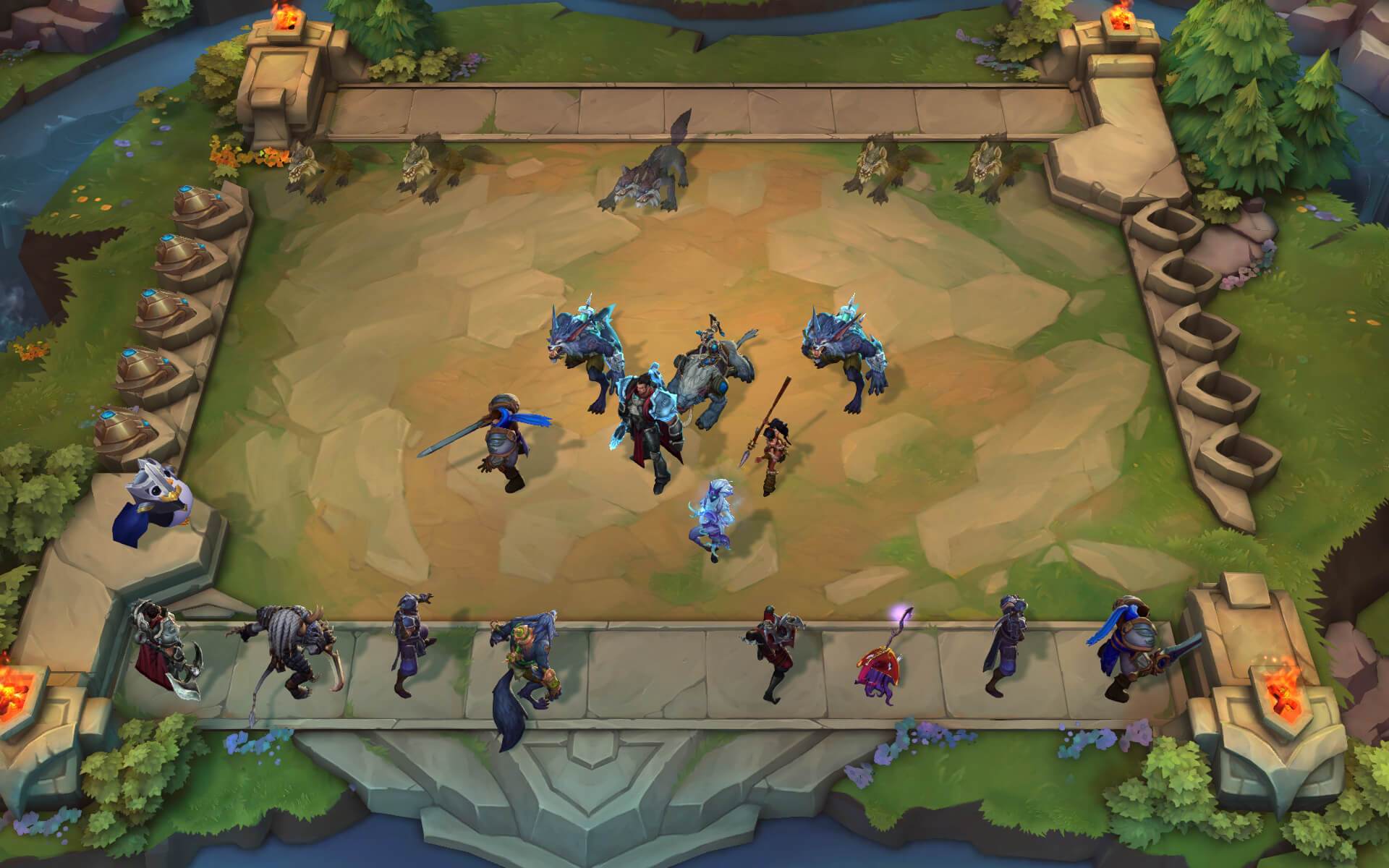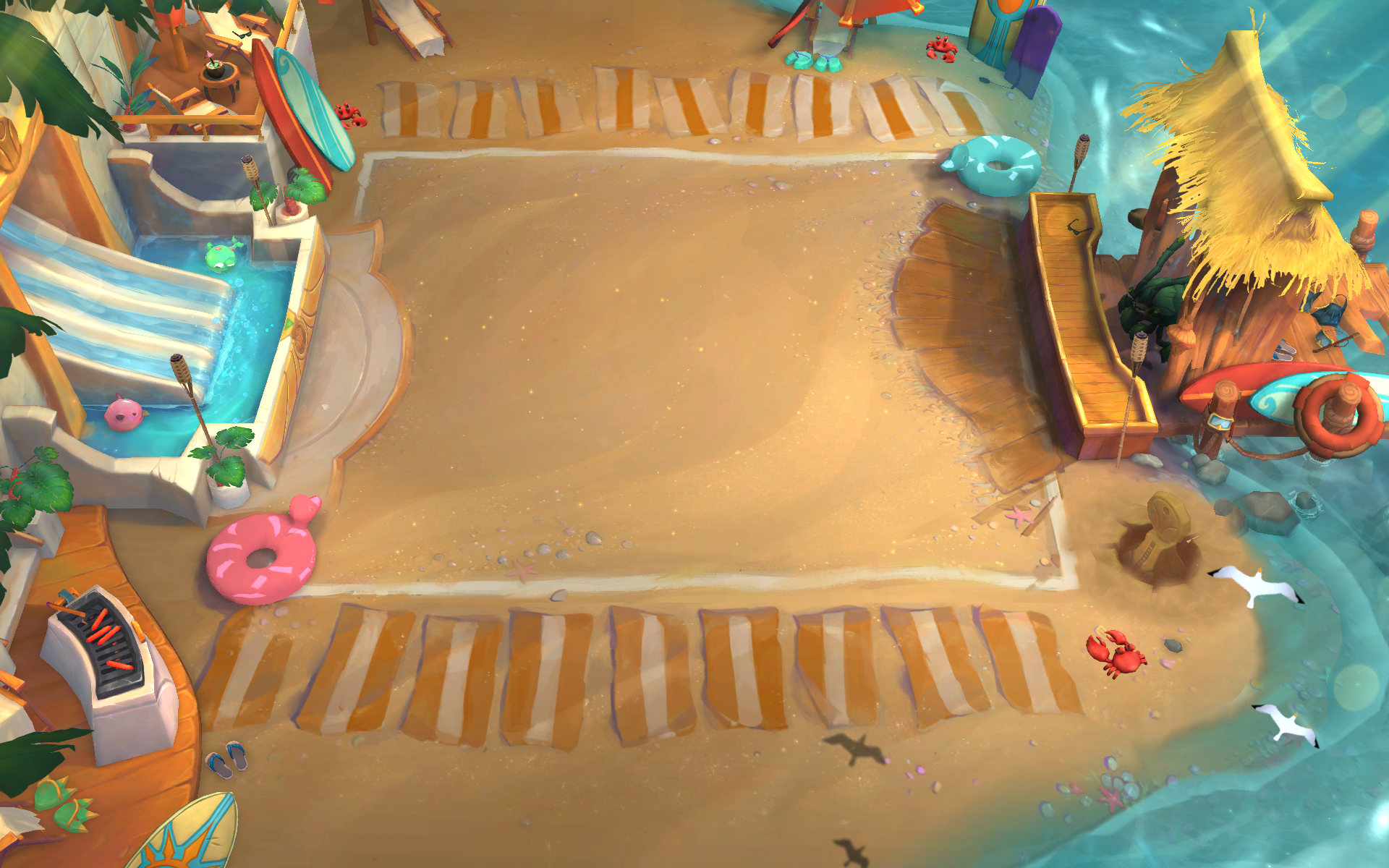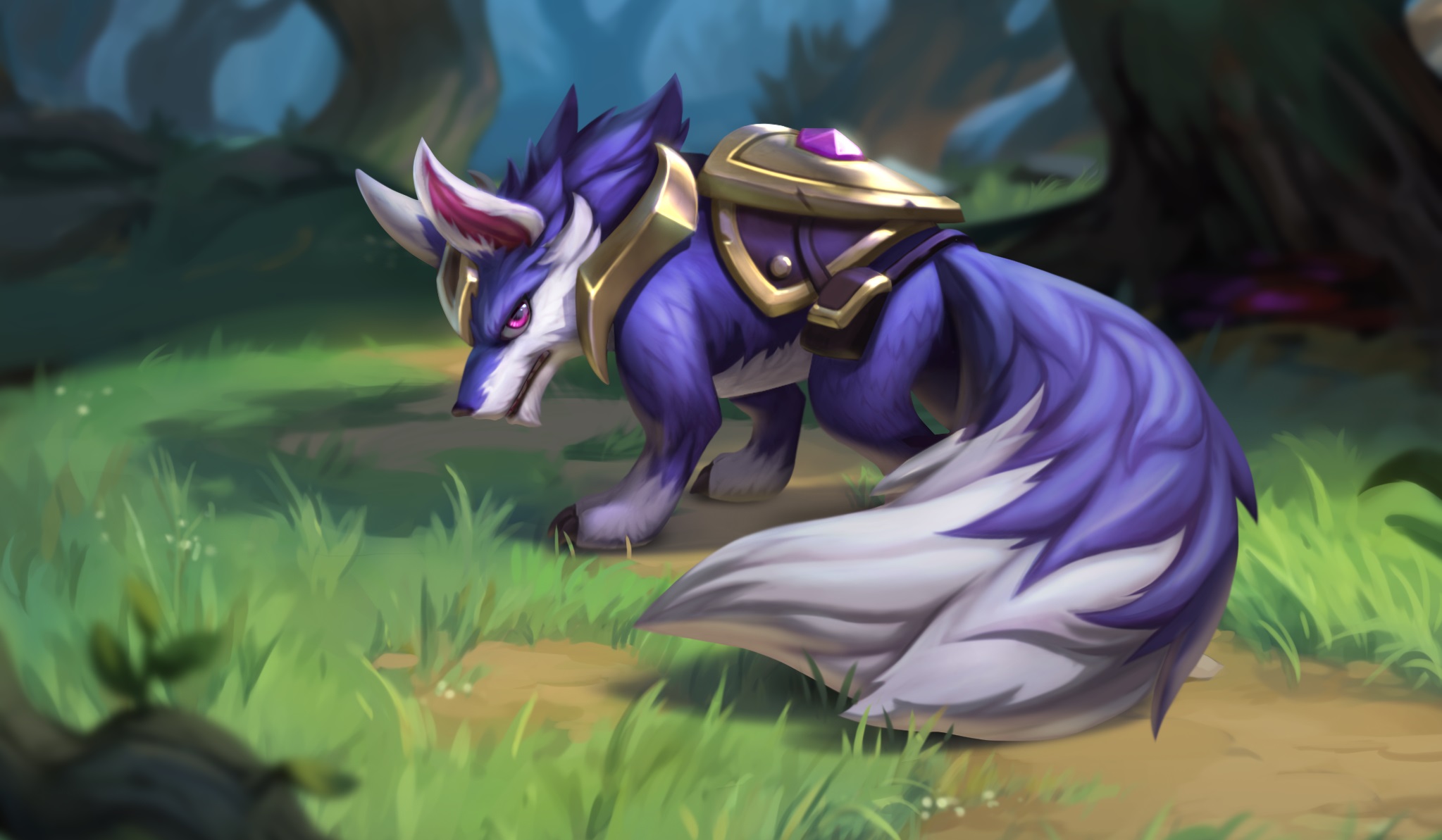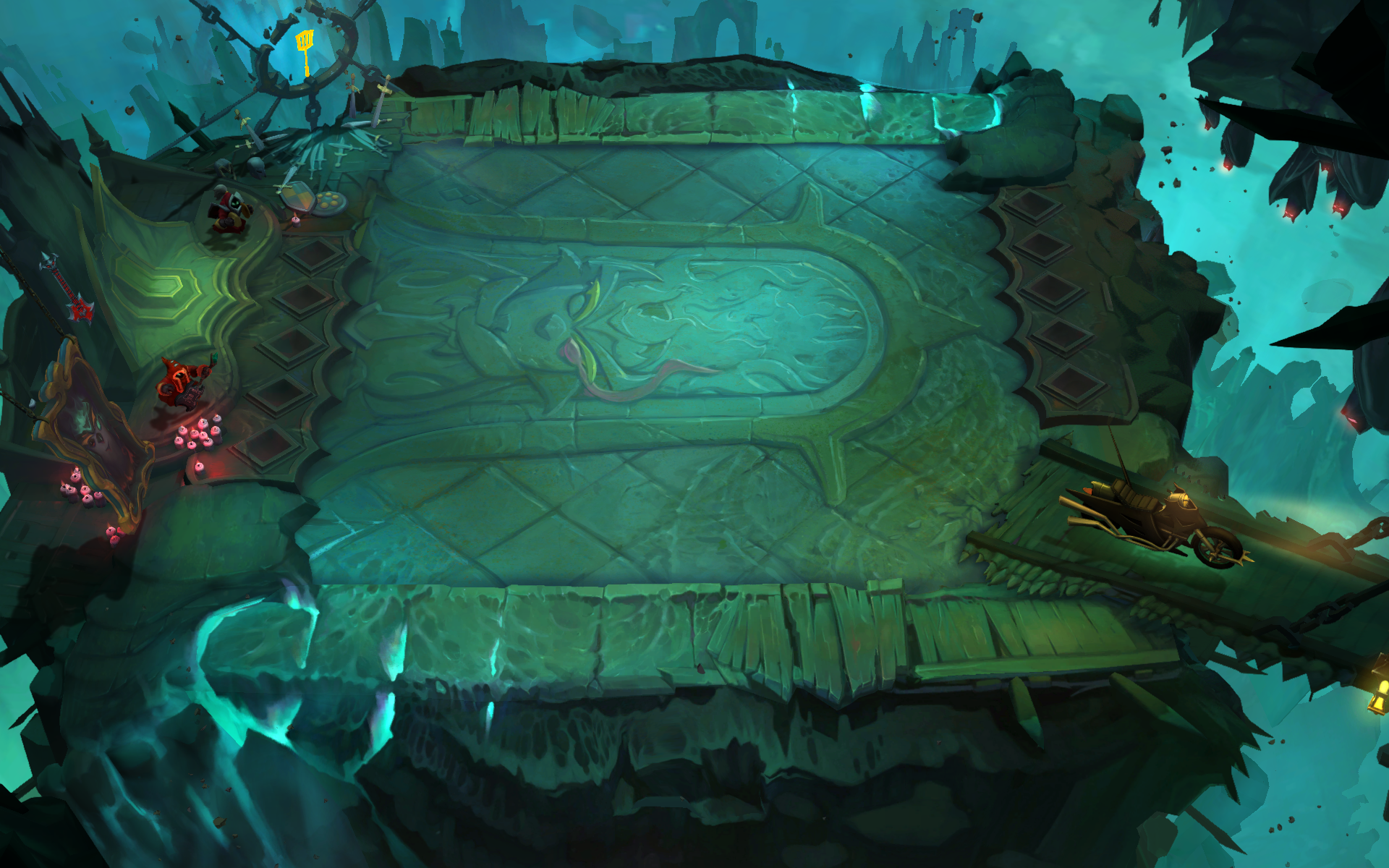How Teamfight Tactics is forging its own identity beyond League of Legends
With a new set launching next week, it's time for change. Again.

Following the flurry of auto battlers that appeared in 2019, hot on the heels of the explosively popular Dota Auto Chess, one game has come to dominate the genre. Like League of Legends before it, Riot's Teamfight Tactics rapidly built up a large playerbase at just the right time, and a couple of years on, it's about to enter its fifth season: Reckoning. It's in a strong position, then, but some of that is thanks to its connection to the studio's venerable MOBA. Now it's finding its own identity.
"When Teamfight Tactics was originally pitched, one of the points that was raised for why we should make it was that RTS is a very compelling, mastery-intensive genre, that nonetheless is pretty inaccessible because of the demands it makes on its players," senior game design manager Ananda Gupta explains.
Where its MOBA counterpart lets players focus on a single unit, TFT offers a slightly different proposition, where players can build a whole squad of colourful combatants, but ones that they don't directly control during fights. It's a distillation of RTS battles that guts the micromanagement and some of the more complicated components, but still retains a high mastery ceiling and a lot of complexity.

Of course, this is the strength of the genre generally, but TFT had a big advantage at launch: League of Legends. A whole universe of characters, a launcher that already sat on millions of desktops, currencies, progression systems and, importantly, Riot's design philosophy all gave the new game a very helpful boost. It made a lot of sense then, and "it still makes sense now," says Gupta. But that connection also introduced a bit of awkwardness.
I've become obsessed with TFT, but I've never been able to enjoy LoL. So I sometimes resent needing to use the shared launcher, and when I first got started, it took a while for me to figure out what parts I should ignore. I was getting rewards and interacting with systems that gave me nothing for TFT, but I had no idea. I assumed I was in the minority, and that most players dabbled in both games, but that's not actually the case.
"Actually, it's not as high as I expected," says product owner Winston Baker. "I'm a player who plays both, but what I found actually is that we have a lot more endemic TFT players than we originally anticipated. Certainly there are people who go back and forth, but it's not quite like [League of Legends modes] Summoner's Rift and All Random All Mid. TFT is a whole different game. And so I think it sort of tracks in the way that you would expect where it is an entirely different genre."

With that in mind, Riot is open to separating the pair a little bit more. TFT will probably always have a deep connection to LoL, but it can do that and still have its own space, its own client.
Keep up to date with the most important stories and the best deals, as picked by the PC Gamer team.
I've sometimes thought that a branching battle pass rather than a pure linear pass—more of a map than a line—would be a lot of fun.
Ananda Gupta
"A lot of it depends on, essentially, how we best serve players," Baker says. "That's generally how we think about it. When we wanted to launch TFT, the best way to do that was to use our existing client for LoL, because it afforded us a lot of advantages. I think as the game grows, and as it develops its own identity, yeah, we're absolutely looking at potentially moving out, or do we find our own place? We just need to find a home for it. It really depends on how much we invest in it, and that's all driven on how much players love the game."
The seasonal structure, of course, already gives TFT lots of room to do its own thing. At the time of writing, it's coming to the end of the fourth set, Fates. That kicked off back in September, followed by the mid-set update, Festival of Beasts, in January. All sets draw cosmetic inspiration from the LoL multiverse, but are otherwise unique to the auto battler.

All of the sets and their mid-set updates are accompanied by their own battle pass, naturally, and right now they work as you'd expect. You earn pass XP by playing and completing missions, and you go down a linear track, unlocking rewards one by one. Crucially they are all transparent, so you know if it's worth investing in. I'm only in it for the Little Legends, the cute avatars that you can make waddle across the board. I love them to bits, and I get a bit competitive with them, somehow, believing that, if I have a cuter legend, that means I'm better than everyone else I'm fighting against. And I'm right.
Little Legends, new boards, emotes and pretty much everything else you'd expect to see doled out by the passes are already contained within them, but that doesn't mean there's nowhere else to go. "Shall I share the craziest idea I've ever had?" Gupta asks.
"I've sometimes thought that a branching battle pass rather than a pure linear pass—more of a map than a line—would be a lot of fun, because presentation elements could mimic the feel of exploration as well. Anytime it's not linear, of course, you have to contend with player regret, right? Like the player who says, 'Oh, I went in this direction, but then I looked it up on the internet, and actually this other direction would have been better. And now I'm sad because I went in the direction that I don't think I should have gone.' So there's a lot of nuance to designing battle passes to ensure that players feel as little regret as possible."

This is an especially big consideration when there's money involved. If you drop cash on a pass, you expect to get access to everything, so how do you square that with a pass with multiple paths? Riot doesn't have an answer yet, which is why it's still something Gupta's tossing around in his head, rather than it being a reality. But never say never.
It is a fine-tuned instrument, with balance that really is as close to pitch perfect as we've ever been in TFT. And we're throwing it out. In a week, it will be gone.
Ananda Gupta
Ultimately, though, it always comes back to the community, and what they want out of the pass. Transparency and value are high up there, of course, and Gupta explains that Riot's always scrutinising how players react to each set's pass. "How do they talk about it? Where do we think there's even more room to make things better that players will appreciate? We have to think pretty deeply about that."
This is complicated by the fact that the team always has more than one set to consider. "When Set 5 hit PBE, I had to refresh myself on 5 because I'm already thinking about the second half of the set, as well as Set 6," Baker says. "We are always developing the future sets while the sets are out. It's actually an interesting thing, at least for me, as I feel like I live in multiple timelines all at once and have to hop across them."

How much should be changed between sets is also a tricky issue, and something the team's still figuring out, even as the new set approaches. "I think managing the amount of change is one of our ongoing design challenges," Gupta says, "because on the one hand TFT is a game of change. The set as a whole is this big puzzle that is very complicated and takes a long time to solve, and of course we're also tweaking it so that the solution isn't too obvious, or doesn't stay the same for too long. And then we get it to the point where Festival of Beasts is right now—it is in a place where we are very, very happy. It is a fine-tuned instrument, with balance that really is as close to pitch perfect as we've ever been in TFT. And we're throwing it out. In a week, it will be gone."
The community isn't this monolithic thing that just wants one thing, either. "We have players who, if we don't change the game every two weeks, they're bored and they're out," Baker says. "And then we also have players who really wish we just never changed it. So there's always this balancing act between how much friction we're causing and how much excitement we're generating. So the reality is you're never going to get it right, but you always have an opportunity to do it better. It's like this Sisyphean task where you always have this idea that you can improve it, but ultimately the work is never ending."
I'm already in mourning for some of the stuff that's being left behind, but all the new additions are a convenient salve. Along with the expected new classes and items, Reckoning is also introducing a brand new mode: Hyper Roll. It's the first product of the new Labs initiative, which Riot will continue to use to test out experimental modes. The headline attraction is that it's a mode you can play in 15 minutes. Gold is out, health is reduced to 10hp, and it gets knocked down to 1hp whenever you lose, and there are plenty of other tweaks designed to speed things up, as well as making auto battlers even more accessible. Given the popularity of TFT on mobile, it seems like a good fit.

"We have known for a while that we would make new modes or new Labs with TFT," Gupta says. "Just the standard mode is highly combinatorial—by that, I mean it has hundreds and hundreds, thousands of thousands of combinations for players to pursue. Adding Labs simply piles on top of that more. So we knew we wanted to do different Labs, and we prototyped several, and Hyper Roll emerged as the one that made the most sense to deliver with Reckoning because it made progress fastest. It made both technical and gameplay evolution progress fastest. Obviously we have other things in the cupboard there that we would like to keep going with, depending on how players receive Hyper Roll. There are a lot of different possible outcomes for Hyper Roll, and if we're right, that players will appreciate this additional way to play, then we'll push those."
Hyper Roll and future experiments also come with the potential to forever change TFT. If it's popular enough, the new mode will become a permanent addition that sits next to the regular mode, as long as people keep queuing for it. And Hyper Roll in particular feels like a natural evolution of not just TFT, but Riot's whole philosophy, taking genres like RTS and FPS and finding new ways to make them accessible. And hopefully it will mean I'll be able to put down my phone before 3am. Who am I kidding? I'll absolutely play for just as long, but at least I'll get more games out of it.
Reckoning is in the PBE now, so you can check it out before it launches properly on April 28.

Fraser is the UK online editor and has actually met The Internet in person. With over a decade of experience, he's been around the block a few times, serving as a freelancer, news editor and prolific reviewer. Strategy games have been a 30-year-long obsession, from tiny RTSs to sprawling political sims, and he never turns down the chance to rave about Total War or Crusader Kings. He's also been known to set up shop in the latest MMO and likes to wind down with an endlessly deep, systemic RPG. These days, when he's not editing, he can usually be found writing features that are 1,000 words too long or talking about his dog.

